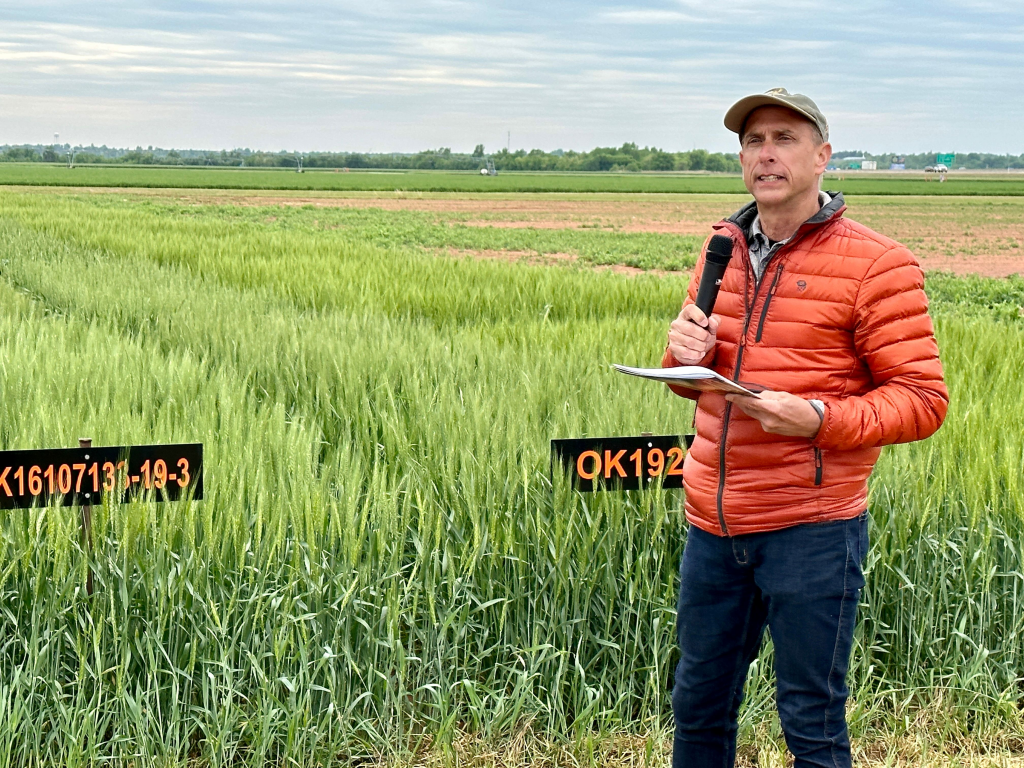
At the Chickasha Wheat Field Day, Senior Farm and Ranch Broadcaster, Ron Hays, is visiting with Oklahoma State University’s Brett Carver from the Department of Plant and Soil Sciences about his work with different wheat varieties to produce better quality and yielding wheat.
“It’s kind of like watching kids grow up,” Carver said.
As Carver watches thousands of varieties grow, he said that after a time, certain varieties tend to stick out for their unique traits.
“When you get to the level of around 100, then you start to really focus,” Carver said. “It takes multiple looks, and it takes multiple years to figure out how these ‘kids’ are going to work and where they are going to work best.”
One of the most important traits a variety must have in Oklahoma, Carver said, is the ability to handle all kinds of stress- especially drought stress.
“Drought stress and disease stress and grazing stress; just anything we can throw at it,” Carver said. “That is why it takes us a little bit more time, I think, than most programs to arrive at a final product.”
Carver said on average, a testing program at OSU takes around five years.
“We want to see the yield response to that stress, but we also want to see the quality stay consistent and stay stable,” Carver said. “I do start testing that quality at the beginning of the yield testing statewide, and not before then. I could start it before then, but I feel like I will get the best return on my investment waiting until we start yield testing across the state. We test for quality across the state because I want that same consistency in the quality.”
That quality, Carver said, is measured by seed size, test weight, protein, dough functionality, and many more traits.
“The quality part of it- there is about half a dozen to ten characteristics that we want to line up and make sure that they all synchronize well and make that good quality dough,” Carver said.
The OSU wheat breeding program has just released its newest variety of winter wheat, called “High Cotton,” which Carver said is a great example of quality.
“This one is stellar in response to all of those stresses we mentioned,” Carver said. “It also has a very high yield ceiling. So, to be able to combine that into one variety- I feel pretty good.”
This kind of balance in a variety, Carver said, doesn’t come around often.
Carver also talked with Hays about some of his latest work regarding improving dough strength, as he said they have had some extreme results.
“That was a little bit of an accident starting out; of course, our intent was to ramp up dough strength, to balance out what was in the marketplace,” Carver said. “I never expected we would come up with a level of dough strength that would rival a hard red spring wheat functionality. That was beyond my dreams, but now I know it is possible.”















